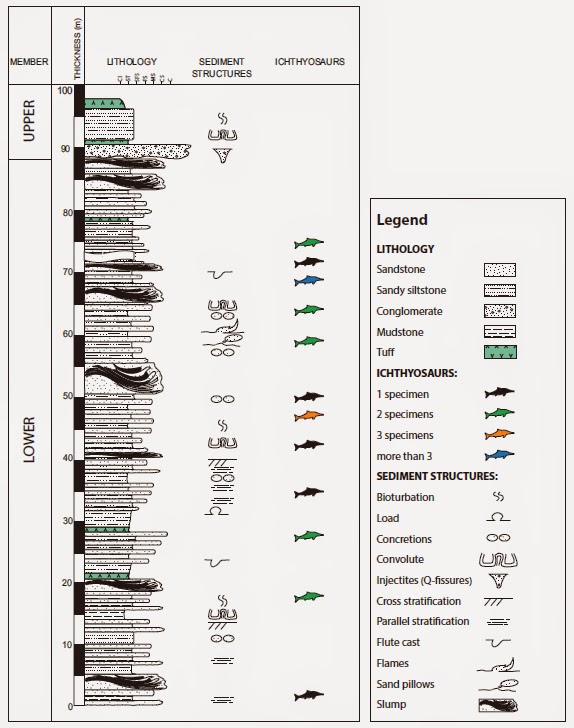
Boulder, Colo., USA – In a new study published in the Geological Society of America Bulletin, geoscientists Wolfgang Stinnesbeck of the University of Heidelberg and colleagues document the discovery of forty-six ophthalmosaurid ichthyosaurs (marine reptiles). These specimens were discovered in the vicinity of the Tyndall Glacier in the Torres del Paine National Park of southern Chile. Among them are numerous articulated and virtually complete skeletons of adults, pregnant females, and juveniles.
Preservation is excellent and occasionally includes soft tissue and embryos. The skeletons are associated with ammonites, belemnites, inoceramid bivalves, and fishes as well as numerous plant remains. The enormous concentration of ichthyosaurs is unique for Chile and South America and places the Tyndall locality among the prime fossil Lagerstätten for Early Cretaceous marine reptiles worldwide.
Four different species have been identified. Both concentration and diversity of ichthyosaurs are unique for South America and place the Tyndall locality among the prime fossil Lagerstätten marine reptiles worldwide. The deposit is Early Cretaceous in age (about 146 million years ago) and forms part of a deep water sequence located in the Rocas Verdes Basin, a straight separating Antarctica and South America from Late Jurassic to late Early Cretaceous times.
The Tyndall ichthyosaurs were gregarious and likely hunted in packs in a submarine canyon near the east coast of this sea. Their potential prey, belemnites and small fishes, were abundant due to plankton blooms caused by cold water upwelling. Occasionally, high energy turbiditic mudflows sucked down everything in their reach, including ichthyosaurs. Inside the suspension flows, the air-breathing reptiles lost orientation and finally drowned. They were instantly buried in the abyss at the bottom of the canyon.
More Information :
W. Stinnesbeck et al., Institut für Geowissenschaften, Ruprecht-Karls-Universität Heidelberg, Im Neuenheimer Feld 234-236, 69221 Heidelberg, Germany. Published online 22 May 2014; http://dx.doi.org/10.1130/B30964.1
Note : The above story is based on materials provided by Kea Giles ,GSA Communications










